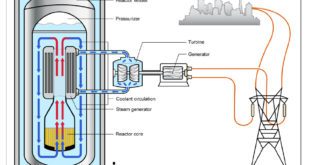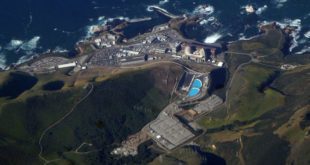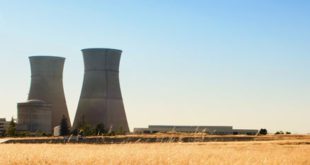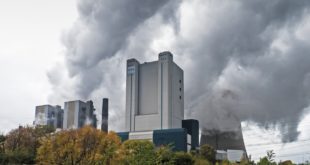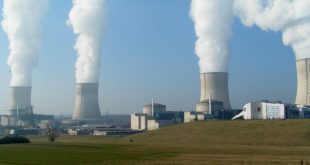One Year After Japanese Disaster, Little or No Movement Seen in U.S. to Improve Response Capability; Complicating Factors: Growing Population Near Nuclear Sites, Aging Reactors & Lack of Gov’t Coordination.
WASHINGTON, D.C. – March 6, 2012 – One year after the Fukushima reactor crisis in Japan, no meaningful progress has been achieved in improving the ability of first responders and medical professionals to react to a disaster on a similar scale in the United States, according to a major new report from Physicians for Social Responsibility (PSR).
To underscore their point, PSR representatives participated in a news conference with a Japanese first responder from Fukushima and a second Japanese expert on the nuclear power industry in that nation.
Titled “Nuclear Power And Public Health: Lessons From Fukushima, Still Dangerously Unprepared,” the PSR report notes: “Existing U.S. emergency preparedness drills do not consider prolonged station black out, severe regional natural disasters, or multi reactor events … The U.S. has not developed the capability to inform and direct emergency personnel and the public in real time during an unfolding severe event, regarding actual radiation levels, plume directions, food and water safety, timely distribution of stable potassium iodide, or the rationale of sheltering-in-place advisories to the public.”
Dr. Ira Helfand, North American vice president, International Physicians for the Prevention of Nuclear War and past president of Physicians for Social Responsibility, said: “While there is an urgent need to improve our preparedness for a major nuclear accident we also need to understand that there is no planning possible for some of the worst consequences of a nuclear disaster.”
Helfand added: “Recent press reports indicate that the Japanese government feared during the first chaotic days of the accident that it would need to evacuate Tokyo. No one has ever evacuated tens of millions of people, and it probably cannot be done in the time frame that would be required. But that is exactly what we would have to do here in the US in the event of a major accident at Indian Point. The evacuation of a 50 mile zone around Indian Point would involve 17 million people. The evacuation zones around several other plants in the U.S. contain more than five million people. In the event of a large scale disaster, most of these people will not, in fact, be evacuated and they will be exposed to dangerous levels of radiation which will, in fact, kill many of them.”
Erik Larsen, MD, associate director, Emergency Department, White Plains Hospital and member of the National Disaster Medical System, the Disaster Medical Assistance Teams, and the New York City MEDICS Disaster Team, said: “Our abilities to respond to this type of incident has improved over the years, but any response to a large scale incident involving large number of injured and radiologically contaminated patients, let us say hundreds not thousands, has to be seriously questioned. There has not been a lot of funding for this type of training and facility preparation, some from the Department of Homeland Security, but very little from the nuclear power industry. Money for disaster preparation in general has been fading away — it has no immediate benefit to the public until a disaster happens. Here is a potential disaster that could be prevented with funding from the industry.”
How serious is the potential emergency response problem? The PSR report points out that:
* Over the past 40 years populations have grown markedly in the 10- and 50-mile established evacuation zones surrounding operating U.S. commercial nuclear reactors. Since 1980, populations around nuclear reactor stations have grown considerably, by an average of 17 percent within 10 miles of reactor stations in the U.S; however in some vicinities, populations have doubled. In a worst case scenario at the Indian Point nuclear station near New York City, the logistics of evacuation OF the 17.3 million people living within 50 miles of the station would be impossible.
* Nearly all spent nuclear fuel ever created by U.S. commercial reactors, approximately 72,000 tons, has accumulated and is still stored at U.S. reactor stations. In the U.S., 75 percent of all spent fuel is still in wet cooling pools that are poorly protected, remaining highly vulnerable to loss of cooling events, terrorist attack, and to severe natural disasters.
* Severe weather/natural disaster events approaching those of Fukushima are no longer uncommon in the U.S. The Fort Calhoun Station, on the Missouri River just north of Omaha, NE, had serious flooding in the summer of 2010 and the NRC subsequently found that the station’s flood plans were inadequate. A year later in April 2011 the Fort Calhoun Station was put into cold shutdown voluntarily in anticipation of flooding due to unprecedented huge snow pack in the Montana Rockies. The station was flooded as anticipated with peak inundation in June and lasting through August. Fort Calhoun is still off line 11 months later. On August 23, 2011 a 5.8 magnitude earthquake centered in Virginia rattled the Washington DC area and triggering shutdown of two regional nuclear stations. A week later monster Hurricane Irene moved up the eastern U.S. seaboard and into New England. The near confluence of two natural disasters in the U.S. similar to, but less severe, that the Fukushima event is
remarkable. The argument “but it hasn’t happened here yet” is growing steadily weaker.
* Plume pathways from a severe reactor accident would never behave according the simple 10-mile radius paradigm central to the basis of current U.S. emergency planning for reactor emergencies. Neither would a 50-mile or greater radius, used by the Environmental Protection Agency (EPA), for radiation contaminated food and water interdiction as numerous radiation hot spots have been identified in Japan more than 100 miles from Fukushima.
* The U.S. has not developed the programs to educate the public on radioactivity and radiologic hazards before possible accidents happen. Radiation is silent and invisible and the potential for long-term serious health effects are concepts that are difficult to grasp by the lay person. The need to educate the public could undermine the, until now, strongly projected assurance by both nuclear operators and government agencies, that nuclear power is safe.
Also appearing at the PSR news event today were: Kyoko Kitajima, organizer, Precariat Union, Tokyo, and provider of aid and support activities in response to the March 11, 2011 earthquake and tsunami; and
Yuki Tanaka, research professor, History, Hiroshima Peace Institute, Hiroshima City University and author of several books.
RECOMMENDATIONS
According to the new PSR report: “The past experience with catastrophic nuclear accidents and their frequency indicates that no country is prepared physically or financially to deal with the short and long term effects. As opposed to natural disasters, experience has shown us that nuclear catastrophes do not remain isolated but tend to become global problems affecting us all. Such preparations in the U.S. will likely be useless if a similar accident happens in countries such as North Korea, Pakistan, or other countries that have nuclear power reactors but no emergency plans. In reality, there is no cure once these events have happened; the only options are mitigation and palliation. In the absence of a cure, prevention is the only option.”
The PSR report conclusion continues: “Short of prevention, PSR makes the following recommendations. Each recommendation would ease at least some of the attendant problems associated with such emergencies.
1. Education of the public and 1st Responders regarding radiation exposure and health;
2. Implementation and education of the public and 1st Responders on emergency plans which may include sheltering in place, early distribution of stable potassium iodide, and evacuation;
3. Enhancement of the NRC’s ability to monitor the distressed site in real time with communication and transparency to the public about such events;
4. Enhanced fuel pool security;
5. A moratorium on building further nuclear power plants until the attendant problems of safety and dealing with waste are openly dealt with and solved in some fashion;
6. The phasing out of nuclear power as a source of energy, beginning now.”
 Alternative Energy HQ solar power for homes, wind energy, and bio fuel issues
Alternative Energy HQ solar power for homes, wind energy, and bio fuel issues

